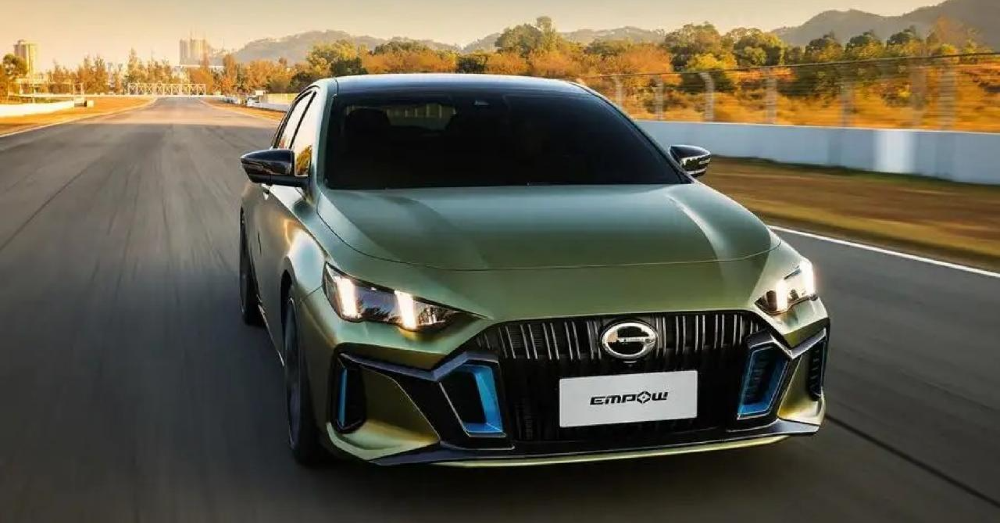Harmful materials have been used in building and powering cars for decades. Could we soon have an ammonia-powered engine in small passenger cars?
Ammonia is used in agriculture and is generally only handled by professionals trained to do so. Recently Chinese automaker GAC and Toyota have partnered together to create a new engine powered only by ammonia that emits much less carbon dioxide than traditional gasoline engines. The emitted materials into the atmosphere could offer a more efficient way to avoid pollution without changing to electric vehicles, but using ammonia comes with some serious concerns.
GAC and Toyota developed an ammonia-powered engine
The engine recently produced by GAC appears to have enough cylinder pressure to prevent excess nitrogen from being a problem. This new engine that runs on ammonia is a 2.0-liter 4-cylinder model that produces 161 horsepower. This power output isn’t the story, though. The real story is the reduction of carbon emissions. This engine reduces carbon emissions by 90 percent compared to conventional fuels. Could we see more ICE models powered by ammonia in the future? Although the carbon emissions could be reduced by 90 percent with this new engine setup, there are drawbacks to using ammonia.
A much faster burn is required
One of the greatest pain points associated with producing an ammonia-powered engine is the speed at which the substance is burned. If not burned fast enough, the material expelled into the atmosphere could be nitrogen, which can lead to acid rain. This would be much worse than the current pollutants coming out of our tailpipes. When burned fast enough, ammonia doesn’t emit any hydrocarbon or CO2 when combusted, which is where we find the 90 percent reduction in pollutants entering the atmosphere. For this substance to be useful in cars, several safety systems must be put in place.
Ammonia doesn’t provide the same energy density as gasoline
Fueling internal combustion engines with ammonia can be extremely difficult because of it’s slow-burning properties and lack of energy density. In fact, this material is only about one-third as energy-dense as diesel fuel. This slow-burning property returns an octane rating of 120 for ammonia compared to 87 and 92 octane fuel that we use in our cars. In fact, an octane rating of nearly 100 is reserved for racing fuel put into race cars at the track. This means using ammonia burns hotter and has a higher flash point than diesel or gasoline.
Exposure to ammonia could be fatal
Necessary safeguards would be required for an ammonia-powered engine to be successful. This harmful substance is currently only handled by those trained to do so because it’s fatal to humans. It’s primarily used in agriculture but is also utilized in manufacturing plastics, textiles, explosives, and pesticides. Another place we see ammonia used is as a refrigerant gas. These are all industries where handling this substance is done carefully and by those trained properly. Unleashing ammonia as a potential fuel for our vehicles could lead to some serious problems, requiring various safeguards against potential fatalities.
What could happen if one of these engines were in a crash?
Because ammonia is such a harmful and dangerous substance, a key factor in whether or not it could be useful as an alternative fuel is what might occur if a vehicle with one of these engines is in a crash. Currently, this product can be used in some large trucks as an alternative to diesel, but public use brings a new level of danger to the mix. What happens if the gas tank is punctured and liquid ammonia is expelled into the atmosphere? Could this substance leak into the cabin and cause occupants to die in a crash in which they should have survived?
Neither company has committed to this new engine
At this point, you might wonder why GAC and Toyota are exploring the option of building an ammonia-powered engine for smaller vehicles at all. The negatives seem to easily outweigh the positives. Thus far, neither company has committed to producing cars powered by this substance. It’s not likely to take off and become a reality, but the research and development that went into learning how to burn this substance fast enough to avoid nitrogen and CO2 emissions could lead to something even better in the future.
Will we see ammonia-powered engines in the future? Probably not, but that doesn’t stop automakers from continuing to build on what GAC and Toyota have learned about how fast this product can burn and the inherent dangers of using this substance in regular passenger vehicles.
This post may contain affiliate links. Meaning a commission is given should you decide to make a purchase through these links, at no cost to you. All products shown are researched and tested to give an accurate review for you.

